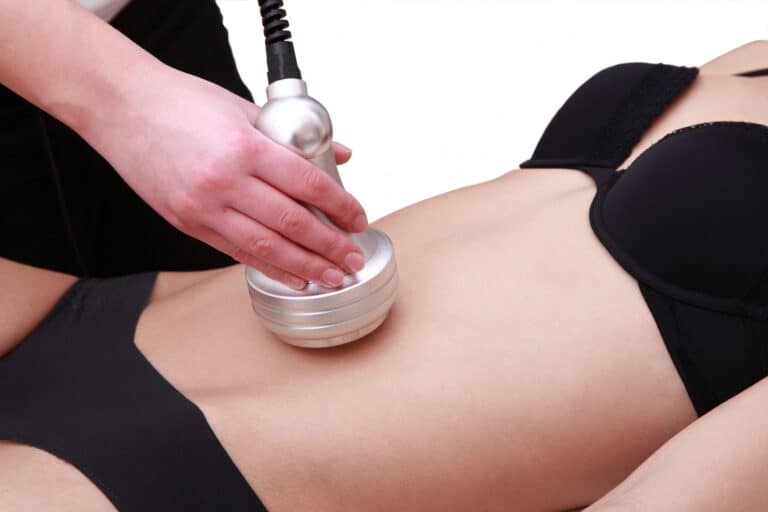Jawline Filler: Benefits, Procedure, Cost & Recovery
Injectable fillers for jawline definition have gained popularity in recent years. This trend reflects a growing desire for enhanced facial contours and a more defined profile. Historically, people have sought various methods to achieve a sculpted jawline, from makeup techniques to surgical procedures. However, advancements in cosmetic treatments now offer non-invasive options that deliver immediate results.
These fillers provide volume and structure, creating a sharper jawline without the downtime associated with surgery. Many individuals appreciate the natural look and quick recovery that injectable fillers offer. Understanding their benefits is essential for anyone considering this treatment.
Key Takeaways
- Injectable fillers can effectively enhance jawline definition, providing a more sculpted appearance without surgery.
- A defined jawline can boost confidence and improve facial symmetry, making it a popular choice for those seeking aesthetic enhancements.
- It’s crucial to consult with a qualified professional to discuss safety precautions and ensure the procedure is suitable for your individual needs.
- Be aware of potential side effects, such as swelling or bruising, and understand that these are often temporary.
- Recovery time is typically short, but following aftercare instructions is essential for optimal results.
- Consider the cost of fillers, as prices can vary based on the provider and the amount needed for your desired outcome.
Understanding Injectable Fillers
Role of Fillers
Injectable fillers play a crucial role in cosmetic procedures. They enhance facial contours and improve volume. Many people seek these treatments for jawline definition. A well-defined jawline can create a more youthful appearance.
Fillers can also smooth out wrinkles and fine lines. They provide immediate results, making them popular among those wanting quick changes. The effects usually last several months, depending on the type of filler used.
Composition of Fillers
Most injectable fillers contain hyaluronic acid (HA). This substance occurs naturally in the body. It helps retain moisture and adds volume to the skin. HA fillers are biocompatible, meaning they work well with human tissue.
Other types of fillers include poly-L-lactic acid (PLLA). These fillers stimulate collagen production over time. This can lead to longer-lasting results. Both types have their advantages and are chosen based on individual needs.
Procedure for Administering Fillers
Administering filler injections involves a few steps. First, a consultation occurs to discuss goals and expectations. A qualified practitioner assesses the areas to be treated.
During the procedure, the practitioner cleans the injection site. They may apply a topical anesthetic to reduce discomfort. Then, they perform a subcutaneous injection using a fine needle or cannula.
Common areas for treatment include the jawline, cheeks, and lips. Practitioners often use deep injection techniques for better results in specific areas. After the injection, patients may experience some swelling or bruising. These effects typically resolve within a few days.
Safety and Considerations
Safety is key when considering injectable treatments. Choosing an experienced professional is essential for minimizing risks. They should understand facial anatomy and injection techniques well.
Patients must disclose any medical conditions or allergies before treatment. This information helps prevent complications during and after the procedure.
Results from dermal filler injections can vary based on individual factors such as skin type and age. Regular follow-ups help maintain desired outcomes over time.
How Fillers Enhance Jawline
Volume Addition
Fillers add volume to the jawline. This creates a more defined and structured appearance. Many people seek jawline fillers for this reason. The added volume helps define the jaw’s contours. A well-defined jawline can enhance facial symmetry. It also contributes to an overall youthful look.
Sculpting Process
The process of sculpting the jawline involves using specific fillers like JUVÉDERM® VOLUX® XC. This filler is designed for deeper injection into the jaw area. Practitioners assess individual facial anatomy before treatment. Each person’s needs differ based on their unique features.
During the jaw filler procedure, a trained professional injects the filler along the jawline. They often start with small amounts to gauge how the face responds. This method allows for precise adjustments during the treatment. Patients may notice immediate changes in their jawline shape after injections.
Longevity of Results
Results from jaw filler treatments can last up to one year. This duration depends on various factors, including the type of filler used and individual metabolism. Regular follow-up treatments can help maintain the desired look over time. Many patients appreciate the long-lasting effects of these facial injections.
Treatment Considerations
Patients should understand that results vary by individual. Some may require additional sessions for optimal definition. Full face filler treatments may also complement jawline enhancement. Combining different types of fillers can create a balanced look across the face.
Safety and Side Effects
As with any cosmetic procedure, there are potential side effects. Common issues include swelling, bruising, or tenderness at injection sites. These typically resolve within a few days. Choosing a qualified practitioner reduces risks associated with jaw filler injections.
Benefits of Defined Jawline
Aesthetic Appeal
Defined jawline enhancement offers significant aesthetic benefits. A strong jawline contributes to facial symmetry. Symmetry is often associated with beauty. People perceive symmetrical faces as more attractive. This perception can lead to a more youthful appearance. A well-defined jaw can make the chin profile appear sharper and more balanced.
Many individuals seek jawline definition to enhance their overall look. They desire a more sculpted face that draws attention. The enhancement can also reduce the appearance of sagging skin. As people age, skin loses elasticity. Fillers help restore volume in the jaw area, creating a firmer look.
Psychological Impact
The psychological effects of a defined jawline are profound. Many individuals report increased self-confidence after enhancing their jawline. Feeling good about one’s appearance boosts self-esteem. This change can influence personal and professional interactions positively.
People often feel more satisfied with their appearance post-treatment. They may take more photos or engage in social activities they previously avoided. Enhanced facial features contribute to an improved body image. A strong jawline can become a source of pride for many.
Non-Surgical Option
Another advantage of using fillers for jaw enhancement is the non-surgical nature of the procedure. Unlike invasive surgeries, fillers offer a quick solution with minimal downtime. Patients typically experience less discomfort and fewer risks compared to surgical options.
The treatment usually takes under an hour and requires no hospitalization. Recovery is swift, allowing individuals to return to their daily routines quickly. Fillers provide immediate results, which adds to their appeal.
Patients can enjoy enhanced jawline definition without the lengthy recovery associated with surgery. This option suits those looking for subtle changes without drastic measures.
In summary, the benefits of defined jawlines extend beyond aesthetics. Individuals gain confidence and satisfaction from their enhanced appearance. Non-surgical treatments offer a practical alternative to traditional surgery, making it accessible for many.
Safety and Precautions
Consultation Importance
Consulting with a qualified healthcare professional is crucial before receiving injectable fillers for jawline definition. They can assess individual needs and determine the best approach. A trained expert understands the anatomy of the face and potential risks involved. This ensures a safe experience and satisfactory results.
Medical History Disclosure
Disclosing any medical history is vital. Patients must inform practitioners about allergies, previous surgeries, or ongoing medications. Certain conditions may increase risks during treatment. For example, those with autoimmune diseases or skin disorders should be cautious. Transparency helps in tailoring the treatment plan to each individual’s health profile.
Post-Treatment Care
Following post-treatment care instructions is essential for minimizing risks. Practitioners usually provide guidelines that include avoiding strenuous activities and direct sun exposure. These steps help enhance recovery and maintain the appearance achieved through the procedure.
Patients should also monitor for any unusual reactions after treatment. Swelling or bruising is common, but persistent pain or discoloration may indicate complications. Reporting these issues promptly can prevent further problems.
Age Considerations
Age plays a role in safety as well. Most adults over 18 are eligible for treatment, but older adults might have different considerations. Skin elasticity decreases with age, which can affect filler results. An experienced practitioner will evaluate skin condition and recommend suitable products.
Risk Factors
Understanding the risks associated with injectable fillers is important. Common side effects include swelling, redness, or tenderness at the injection site. Serious complications can occur but are rare when procedures are performed by skilled professionals.
In some cases, ultra-fine needles are used to minimize discomfort and improve outcomes. These needles allow for precise application of fillers, reducing trauma to surrounding tissues.
Protein-Based Fillers
Many injectable fillers contain proteins that help restore volume in the jawline area. Knowing the ingredients used in these products is crucial for safety. Some individuals may have sensitivities to certain components, leading to adverse reactions.
Practitioners often use hyaluronic acid-based fillers due to their safety profile and natural appearance. These fillers integrate well into the skin and provide a more youthful look without significant risks.
Potential Side Effects
Common Reactions
Injectable fillers can lead to several common side effects. Swelling is one of the most frequent reactions after treatment. This usually occurs at the injection site and is often temporary. Redness may also appear around the area where the filler was injected. Tenderness or mild pain can follow as well, but these symptoms typically resolve within a few days.
Most patients experience these effects without complications. However, it’s essential to monitor how your body reacts. If swelling or redness persists beyond a week, consult a healthcare provider.
Less Common Effects
e less common adverse reactions might occur with injectable fillers. Lumps or bumps can form under the skin after injections. These irregularities may require additional treatment to smooth out. Discoloration of the skin is another potential issue. This can happen if blood vessels get affected during the injection process.
Severe allergic reactions are rare but possible. Symptoms may include intense itching, hives, or difficulty breathing. In such cases, immediate medical attention is necessary.
Monitoring Symptoms
Patients should remain vigilant for any unusual symptoms following their treatment. If you notice severe bruising or bleeding at the injection site, contact a healthcare professional right away. Other signs to watch for include persistent swelling or changes in skin texture.
Monitoring is crucial because some complications can arise from improper technique or unregulated products. For instance, using bacterial proteins in low-quality fillers can increase risks significantly.
Long-Term Risks
Long-term risks from injectable fillers include volume loss over time. As the body metabolizes the filler, it can lead to uneven facial contours. In some cases, steroids may be required to reduce inflammation if significant swelling occurs.
Patients with a history of severe allergies should discuss this with their provider before proceeding with treatment. A thorough consultation helps minimize risks and ensures safety during the procedure.
Suitability for Fillers
Ideal Candidates
Adults over 21 often make the best candidates for jawline fillers. Many seek treatment due to moderate to severe loss of jawline definition. This loss can occur from aging, weight fluctuations, or genetics. Individuals with a well-defined jawline may also consider fillers to enhance their existing features.
Those who have realistic expectations about the results tend to benefit most. The filler treatment generally improves contour without drastic changes. It is essential for candidates to understand that results are temporary and require maintenance.
Factors Affecting Suitability
Several factors influence whether someone is suitable for dermal fillers. Skin type plays a significant role. People with thinner skin may experience different results compared to those with thicker skin. Age affects skin elasticity and overall appearance. Older adults might have more pronounced sagging skin, which can impact outcomes.
Overall health status is another crucial factor. Individuals with certain medical conditions should consult healthcare providers before proceeding. Conditions like autoimmune diseases or blood clotting disorders could complicate the filler treatment process.
Alternatives to Fillers
Not everyone is a good candidate for injectable fillers. Some individuals may prefer alternatives if they do not meet the criteria for dermal filler treatments. Surgical options exist for those looking for permanent solutions. Procedures like facelift surgery or neck lifts can provide lasting results but involve longer recovery times.
Non-invasive methods also offer alternatives. Skin tightening treatments using radiofrequency or ultrasound technology can improve jawline definition without fillers. These procedures stimulate collagen production and enhance skin firmness over time.
For those concerned about pigmentation or other skin issues, topical treatments can help improve overall skin quality. Maintaining healthy skin through proper skincare can also enhance the effects of any filler treatment if chosen later.

Consultation with a qualified professional remains essential before deciding on any treatment option. A dermatologist or plastic surgeon can assess individual needs and recommend the best course of action.
Procedure and Recovery
Steps Involved
Patients begin with a consultation. During this meeting, the practitioner evaluates the patient’s skin and discusses goals. They may examine the jawline to determine the best approach.
The next step involves preparing for the skin injection procedures. Doctors clean the treatment area to reduce infection risks. They may apply a numbing cream to minimize pain during the injections.
Once prepared, the practitioner injects the filler into specific areas of the jawline. This process usually takes about 30 to 60 minutes. After injections, patients receive aftercare instructions. These guidelines help ensure proper healing and optimal results.
Recovery Timeline
Immediately after treatment, patients may notice some swelling and redness at the injection site. These effects typically resolve within a few hours to days. Initial results can be seen right away, providing instant jawline definition.
Over the following weeks, improvements continue as swelling decreases. Full results generally appear around two weeks post-treatment. Patients often enjoy a more contoured profile that enhances their facial features.
e individuals might experience minor bruising or discomfort. This usually fades quickly and does not require extensive recovery time.
Minimizing Downtime
To speed up recovery, patients should follow specific tips. Avoiding strenuous activities for at least 24 hours is crucial. Heavy exercise can increase swelling and bruising.
Applying cold compresses can also help reduce swelling and discomfort. Gentle pressure on the treated area provides relief without causing harm.
Staying hydrated supports overall recovery. Drinking plenty of water helps maintain skin elasticity and health.
Patients should attend any follow-up appointments as scheduled. These visits allow practitioners to assess results and address any concerns.
Potential Risks
While most patients tolerate injectable fillers well, some risks exist. Infection remains a concern with any facial injection procedures. Practitioners must ensure proper hygiene throughout the process.
Severe loss of movement in nearby muscles is rare but possible if fillers are injected incorrectly. Training is essential for doctors administering these treatments to minimize such risks.
Patients should discuss all potential complications with their practitioner before proceeding. Understanding these factors ensures informed decisions about treatments.
Cost Considerations
Factors Influencing Costs
Several factors influence the cost of jawline filler treatments. The amount of product used plays a significant role. More volume typically results in higher costs. Practitioners often charge based on the number of syringes needed.
The expertise of the practitioner also affects pricing. Experienced injectors may charge more due to their skills and reputation. They can produce better results with fewer complications. This experience can lead to a smoother treatment process, which may justify the higher cost.
Comparison with Other Procedures
Jawline fillers are often more affordable than other cosmetic procedures. For example, surgical options like facelifts can range from $7,000 to $15,000. In contrast, dermal fillers for jawline enhancement usually cost between $600 and $2,500 per session. This makes fillers a cost-effective option for those seeking jawline definition.
Fillers provide immediate results without the extended recovery time associated with surgery. Patients can return to their daily activities shortly after treatment. This quick turnaround adds to the appeal of fillers compared to more invasive methods.
Consulting Providers
Consulting multiple providers is crucial for understanding pricing structures. Prices can vary widely among clinics and practitioners. Some may offer discounts for multiple syringes or package deals. Others might have loyalty programs that reward repeat clients.
Researching different options helps ensure value for investment. Patients should ask about the specific products used, as some brands may be more expensive than others. Understanding these details allows individuals to make informed decisions about their treatment.
Summary of Costs
- Amount of Product: More volume leads to higher costs.
- Practitioner Expertise: Experienced injectors may charge more.
- Cost Comparison: Fillers are generally cheaper than surgery.
- Consultation: Visit multiple providers for best pricing.
Understanding these elements will help potential patients navigate the financial aspects of jawline filler treatments effectively.
Closing Thoughts
Injectable fillers can transform your jawline, giving you that defined look many desire. They enhance your natural features, boost confidence, and offer a non-surgical option for facial contouring. Understanding the benefits and potential risks is crucial for making informed decisions about your treatment.
If you’re considering fillers, consult with a qualified professional to discuss your goals and any concerns. They can guide you through the process, ensuring safety and satisfaction. Don’t wait—take the first step toward achieving the jawline you’ve always wanted. Your journey to a more defined look starts today!
Frequently Asked Questions
What are injectable fillers for jawline definition?
Injectable fillers are substances injected into the skin to enhance facial contours, including the jawline. They add volume and improve symmetry, creating a more defined look.
How long do the results last?
Results typically last from 6 months to 2 years, depending on the type of filler used. Maintenance treatments can prolong your desired appearance.
Are injectable fillers safe?
When administered by a qualified professional, injectable fillers are generally safe. Always choose a licensed practitioner to minimize risks.
What should I expect during the procedure?
The procedure involves a quick injection process with minimal discomfort. A topical anesthetic may be applied beforehand to ensure comfort.
Are there any side effects?
Common side effects include swelling, bruising, and redness at the injection site. These usually resolve within a few days.
Who is suitable for jawline fillers?
Ideal candidates are individuals seeking enhanced jawline definition without invasive surgery. Consult with a professional to assess your suitability.
How much do jawline fillers cost?
Costs vary based on location and product used but generally range from $600 to $2,000 per session. Consider this an investment in your appearance.






